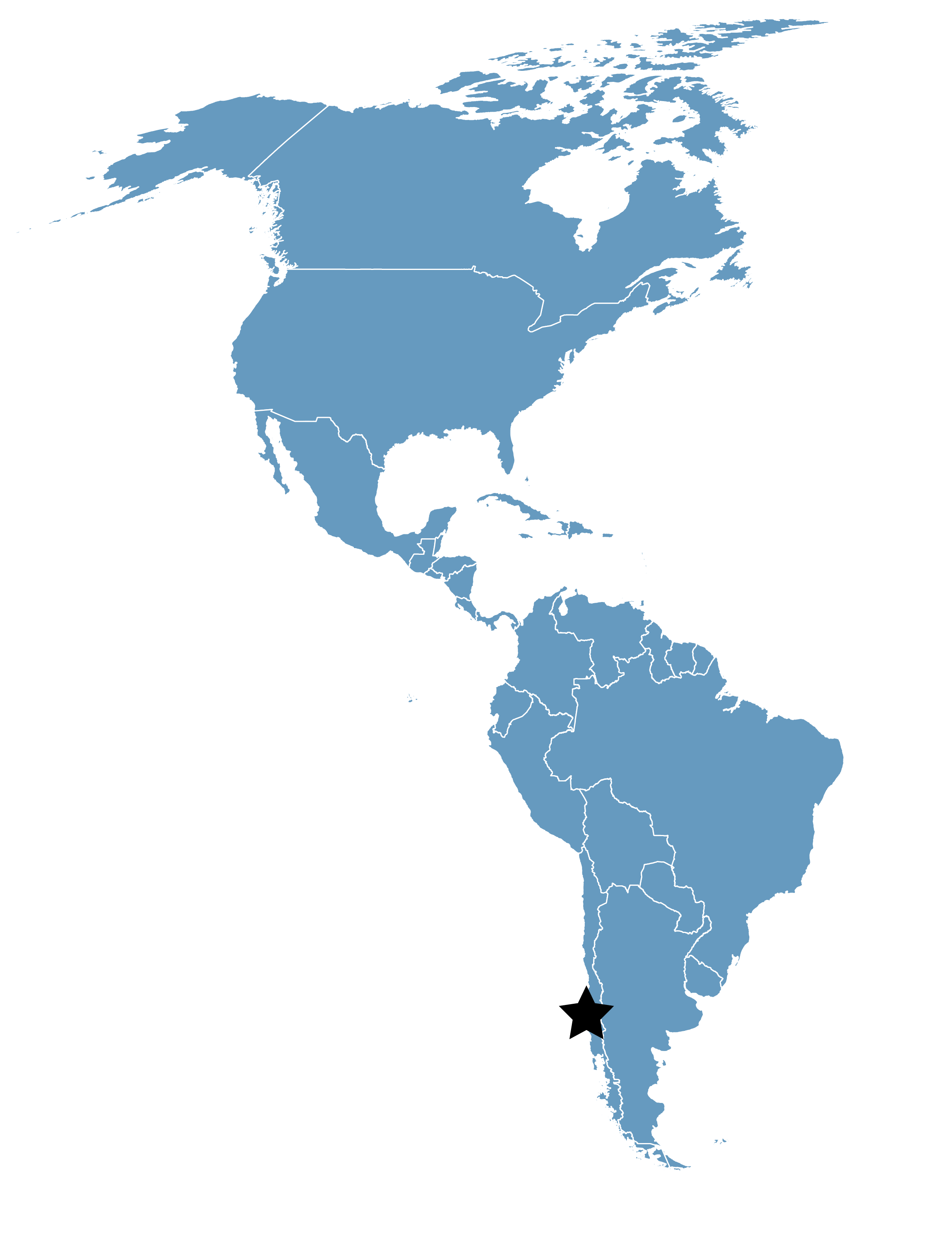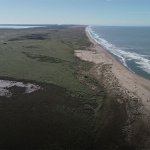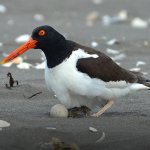Las Salinas de Huentelauquén
Location
Coquimbo Region, Chile.
Category
Regional
Basis for Designation
1% of the biogeographic population of the species(s): Tawny-throated Dotterel (Oreopholus ruficollis ruficollis) and Snowy Plover (Charadrius nivosus occidentalis).
Size
2,772 ha (6,849.7 acres)
Date Designated
March 2022
Site Owner
Huentelauquén Agricultural Community
Site Partners
Huentelauquén Agricultural Community
Red de Observadores de Aves y Vida Silvestre de Chile (ROC)
Overview
The Huentelauquén Salt Flats (Las Salinas de Huentelauquén) cover a total of 2,272 hectares (6,849.7 acres) located in the Canela Commune, Coquimbo Region, on land belonging to the Comunidad Agrícola de Huentelauquén Norte (North Huentelauquén Agricultural Community). The site contains a complex of natural wetlands representative of the semi-arid zone of Chile, both marine-coastal and inland. The marine-coastal wetlands are shorelines with a mix of sand, pebbles, and rocks, mudflats and sandy intertidal areas, and estuarine waters. The inland wetlands receive water from nontidal rivers, seasonal ponds on coastal plains, groundwater, streams with seasonal surface water.
The area around the site is primarily agriculture with artificial wetlands such as small ponds, irrigated land, drainage channels, or ditches. In addition to the traditional work of the land, the area has a long archaeological history of human occupation, associated with the use of the coastal shoreline and riparian land.
Las Salinas de Huentelauquén is the seventh WHSRN site in Chile, designated for its importance as a wintering site for the Tawny-throated Dotterel (Oreopholus ruficollis ruficollis) hosting more than 1% of its biogeographic population. It is also of great importance as critical habitat for the Snowy Plover (Charadrius nivosus occidentalis). In total, the site has at least 160 species of both resident and migratory birds, particularly shorebirds that use the Pacific Flyway or Midcontinental Flyway.
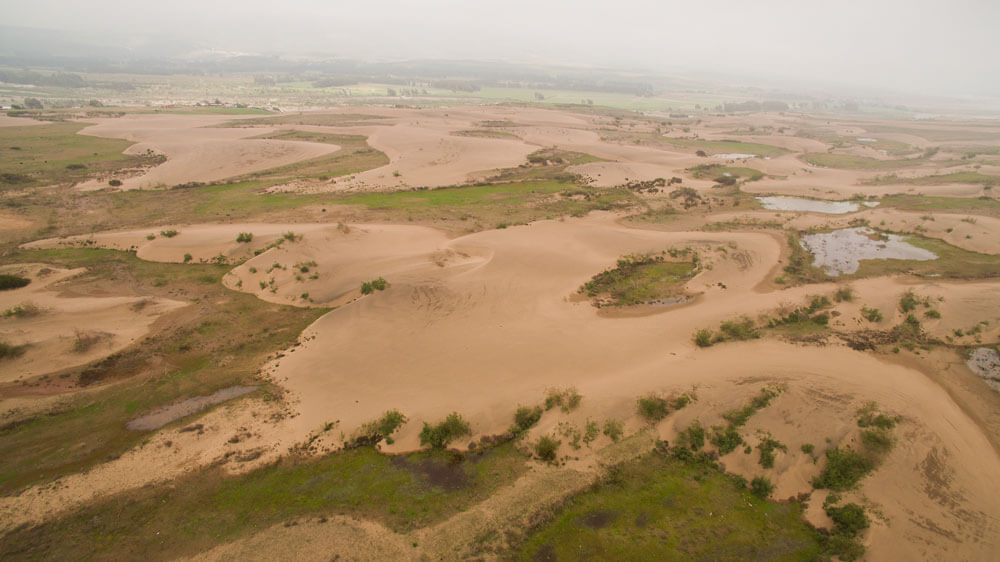
Aerial view of seasonal pond at Las Salinas de Huentelauquén
Shorebird Research
Since 2012, the Vertebrate Ecology Laboratory of the University of La Serena has conducted research, outreach and education activities with local education communities, as part of its biodiversity research program in coastal wetlands of the Coquimbo Region, which has been supported by the Ministry of Environment.
Between 2016-2018 the laboratory conductedthe Tawny-throated Dotterel Project, in collaboration with the Red de Observadores de Aves y Vida Silvestre de Chile (Chilean Bird and Wildlife Observers Network – ROC), to better understand the importance of these coastal plains of Huentelauquén as a wintering area for the species and to conduct research on other local birds.Additionally, ROC has lead several different monitoring efforts including Neotropical Waterbird Census (NWC) since 2009, Shorebird Census from Arica to the south of Chiloé in 2014 and 2019, and the Migratory Shorebird Project (MSP) since 2020. The MSP surveys are testing the methodology of this monitoring program in the austral winter season by conducting shorebird censuses at the mouth of the Choapa River, and seasonal wetlands and coastal plains. Since 2019, the site has also participated in the Network for the Protection of Shorebirds of Chile, coordinated by ROC, which focuses efforts on monitoring the breeding cycle and threats to the American Oystercatcher (Haematopus palliatus) and Snowy Plover, both with breeding and roosting areas at the site.
Local Community
The site is primarily managed under a communal land tenure by the Huentelauquén Agricultural Community, which supported the designation. There are also other landowners in both the coastal area and the rural town and farmland of Huentelauquén Norte, which has neighborhood councils, senior citizens’ clubs, rural women’s organizations, and a rural water administration, among other community-based organizations. The Juan Antonio Ríos School and Las Ardillitas Kindergarten supported the designation, and other schools include Carlos Vial Espantoso School in Huentelauquén Sur and the Semillas de Alegría Kindergarten in Mincha Norte. The site lies within the Commune of Canela, whose municipality also supported the designation through its Mayor and Environmental Office.
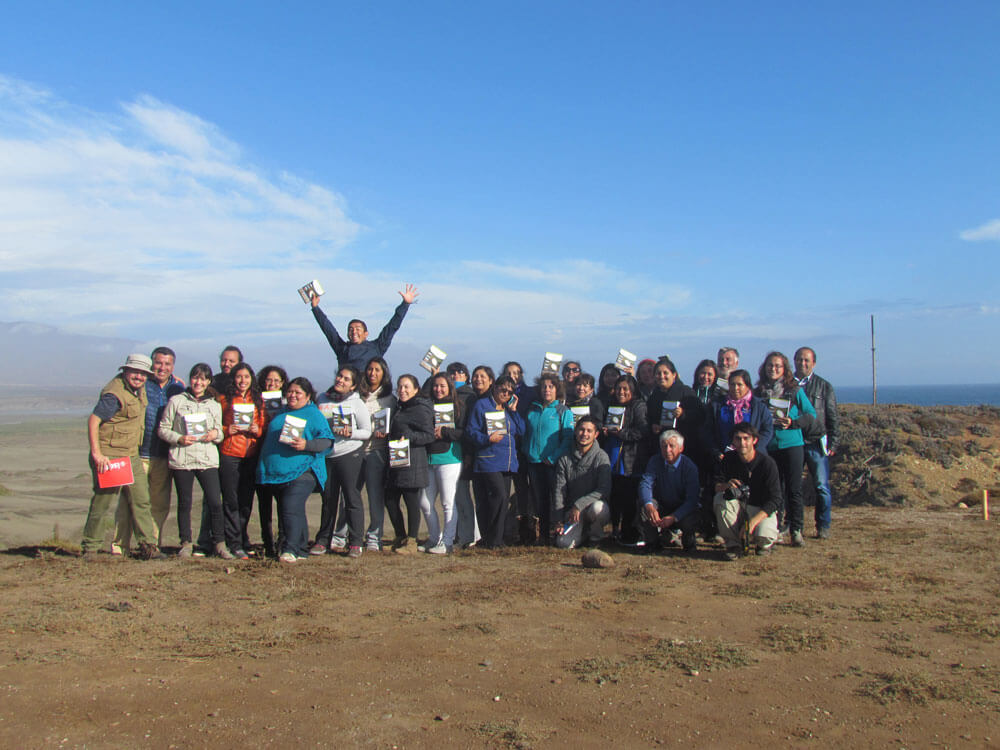
Working with educators in Las Salinas de Huentelauquén WHSRN Site
Challenges for the Territory
The area has experienced aggressive soil erosion due to historic use by peoplec (firewood cutting, grazing), which is currently amplified by prolonged drought and the consequences of climate change. In relation to this, upstream of the basin, the advance of the agroindustry, urban settlements and mining, put strong pressures on the Choapa River basin’s water resources.
In recent decades, both the resident and seasonal population of the communities of Huentelauquén has increased, mainly due to the growing tourism value of the area, reconfiguring the social structure of the local community and land tenure. It should be noted that there are a number of mining concessions in the dunes in the area, which have generated conflicts between the local community and companies. These exploitation plans have not been successful, but they represent a permanent threat to the site’s ecosystems.
The main causes of disturbance to shorebirds are the transit through sandy beach wetlands and all-terrain vehicles used for recreational fishing. The recreational use of motorcycles is another important disturbance to the birds’ resting and breeding areas.
Conservation Actions
Protection and conservation designations have been an important part of the conservation strategy here. In 2011, the Servicio Agrícola y Ganadero de Chile (Chilean Agriculture and Livestock Service) and the Huentelauquén Agricultural Community established a Hunting Prohibition Area at the mouth of the Choapa River, coastal plains, and dune ecosystems, a first of its kind in the area in the Coquimbo Region. In February 2015, the site was designated by the Ramsar Convention as a “Wetland of International Importance” including the mouth of the Choapa River and adjacent wetlands.
Similarly, in 2016, the area was declared as an Important Bird and Biodiversity Area (IBA) in the Endangered category, for being a wintering site for the Tawny-throated Dotterel. The mouth of the Choapa River has also been recognized by the Ministry of the Environment as a Priority Site within the Regional Biodiversity Strategy.
Many of these actions have included outreach activities with the local community, especially students and their educators, which has led to several publications about the site, articles and presentations at school science fairs and academic congresses of different disciplines. This combined with the other research conducted at the site, make Las Salinas de Huentelauquén a natural laboratory for the local community.




